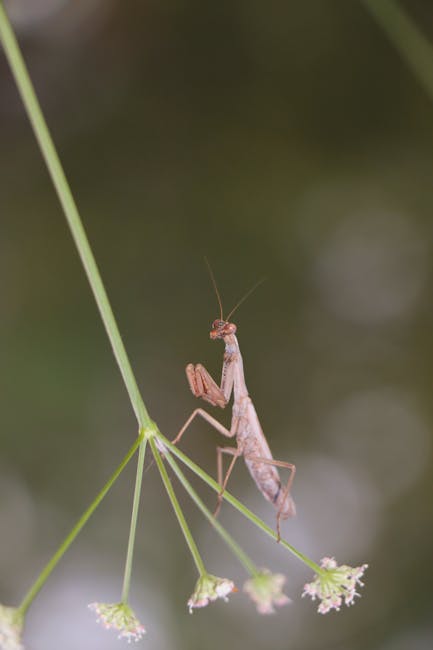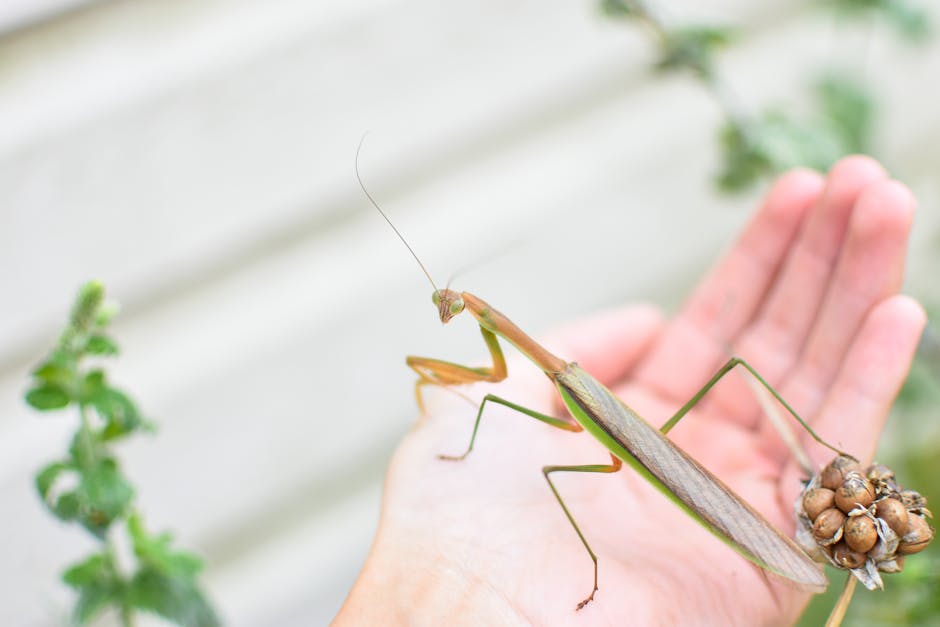Praying Mantises in Your Garden: Nature’s Pest Control and How to Attract Them
Praying mantises, with their striking appearance and predatory prowess, are a welcome sight for many gardeners. These fascinating insects are highly effective natural pest control agents, significantly reducing the need for harmful chemical pesticides. But how do you attract these beneficial creatures to your garden, and what conditions do they need to thrive? This comprehensive guide explores everything you need to know about creating a praying mantis-friendly environment.

Understanding the Praying Mantis
Praying mantises belong to the order Mantodea, characterized by their raptorial forelegs, perfectly adapted for catching prey. They are ambush predators, patiently waiting for unsuspecting insects to come within striking distance. Their diet primarily consists of other insects, including many common garden pests like aphids, caterpillars, grasshoppers, crickets, and even flies. This makes them invaluable allies in the fight against garden pests, contributing to a healthier and more productive ecosystem.
Types of Praying Mantises
Several species of praying mantises inhabit various regions. The most commonly encountered in North America is the Mantis religiosa, also known as the European mantis. Other species, including the Chinese mantis (Tenodera sinensis) and the Carolina mantis (Stagmomantis carolina), are also beneficial garden inhabitants. While the appearance may vary slightly between species, their predatory habits remain consistent.
Creating a Praying Mantis-Friendly Garden
Attracting praying mantises to your garden requires creating an environment that meets their needs for food, shelter, and breeding. This involves a multifaceted approach that considers both plant choices and overall garden design.
Providing Food Sources
The abundance of prey insects is crucial for attracting and sustaining a praying mantis population. A diverse garden filled with flowering plants will attract a variety of insects, providing a plentiful food source for mantises. Consider planting flowers that attract aphids, caterpillars, and other insects that mantises feed on. These include:

- Dill
- Fennel
- Yarrow
- Goldenrod
- Coneflowers
- Sunflowers
Avoid using broad-spectrum insecticides that could harm both the mantises and their prey. A balanced ecosystem is key to maintaining a healthy population.
Providing Shelter and Habitat
Praying mantises require shelter to protect themselves from predators and harsh weather conditions. Providing a variety of structures within the garden will attract and support these beneficial insects. Some suitable options include:

- Tall grasses and shrubs: Provide camouflage and hiding places.
- Brush piles: Offer shelter and overwintering sites.
- Rock piles: Create microhabitats and provide basking areas.
- Dead trees and branches: Offer both shelter and hunting perches.
- Birdhouses and bird feeders: Surprisingly, these sometimes become unexpected habitats.
Avoid excessively manicured gardens. Leaving some areas slightly wild and untamed will significantly increase the appeal to mantises.
Encouraging Breeding
Female praying mantises lay their eggs in protective egg cases called oothecae. These oothecae are often attached to branches or stems. To encourage breeding, ensure a stable and diverse environment throughout the year. Leaving some plant stalks over the winter can provide safe places for the oothecae to develop, allowing new mantises to emerge in the spring.
Understanding the Mantis Life Cycle
Understanding the life cycle of a praying mantis will help you better support their presence in your garden. The life cycle typically includes egg, nymph, and adult stages.
Egg Stage (Oothecae)
The female mantis lays her eggs in a protective case called an ootheca. These cases can contain hundreds of eggs and are often found attached to vegetation or other structures. The oothecae provide protection during the winter months.
Nymph Stage
Upon hatching, the young mantises, called nymphs, emerge from the ootheca. They are miniature versions of the adults and immediately begin hunting for food. They will molt several times as they grow, shedding their exoskeletons.
Adult Stage
Once the mantis reaches adulthood, it will continue to hunt and reproduce. Adult mantises are usually more visible and easier to observe in the garden.
Potential Challenges and Considerations
While generally beneficial, there are some potential considerations when inviting mantises to your garden:
- Cannibalism: Female mantises are known for occasionally consuming the male after mating. This is a natural part of their behavior.
- Prey selection: While they primarily target pests, they may also consume beneficial insects occasionally.
- Overpopulation: While unlikely, an excessively large mantis population may still pose some risks to the balance of the garden ecosystem.
Conclusion: A Natural Approach to Pest Control
By creating a welcoming and supportive environment, you can attract and maintain a healthy population of praying mantises in your garden. These beneficial insects provide a natural and sustainable form of pest control, reducing the need for chemical pesticides and promoting a healthier, more biodiverse garden ecosystem. Remember, patience is key; establishing a mantis-friendly garden takes time and consistent effort, but the rewards are well worth it.

